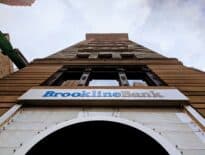Ridership on the MBTA’s commuter rail system, sometimes seen during the pandemic as a barometer for downtown Boston office utilization, has risen steadily this spring, the system’s leader said last week.
The system set a pandemic-era high for the week of April 18 to April 22, a school vacation week, when it carried 65,785 riders, MBTA General Manager Steve Poftak told the agency Board of Directors on Thursday. That figure represents 54 percent of the network’s 2019 ridership and a 5 percent jump alone over the previous week.
“We saw extremely healthy growth in ridership coming out of that omicron trough,” Poftak said. “If you’re on the commuter rail, your eyeballs tell you we’re seeing an increased ridership.”
While ridership on the agency’s bus network, commuter rail system and Blue Line subway have all steadily increased since March, charts Poftak presented show ridership on the Red and Orange lines having stagnated during April. Those two lines – pre-COVID, the two most heavily-used in the system – saw roughly the same or lower ridership compared to November 2021, at between 40 percent and 50 percent of their pre-pandemic ridership.
Many bus lines continue to see strong ridership, with some like the SL3 and Route 16 actually exceeding pre-pandemic levels.
“You see a number of routes remain in the 40s and 50s [percentages of pre-COIVD ridership] serving areas where folks have more optionality in terms of attendance” at the office, Poftak said.
Increasing transit ridership will be key to helping reduce the size of the MBTA’s budget deficit for fiscal year 2024, projected at between $236 million and $421 million, depending on the pessimism of ridership forecasts.




 |
| 


